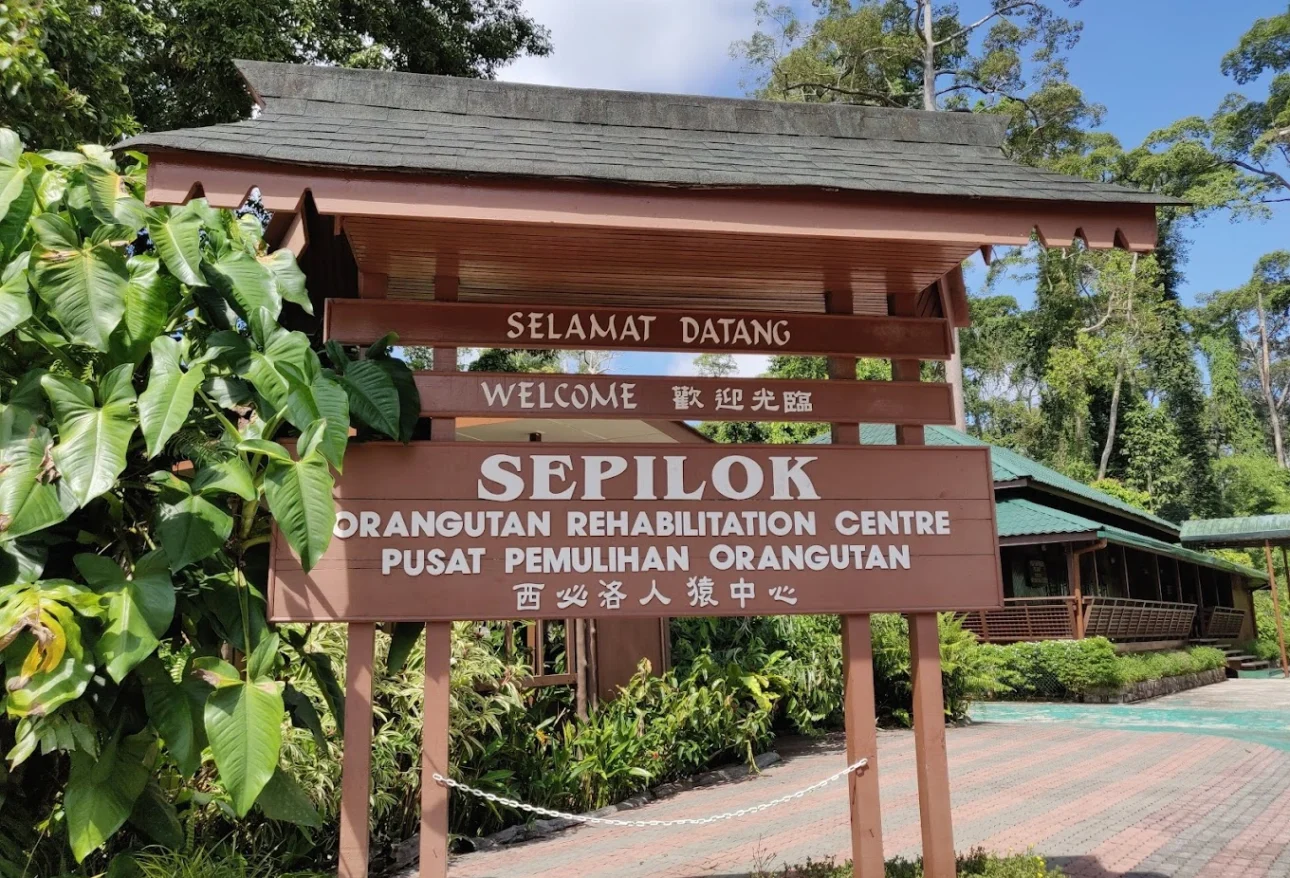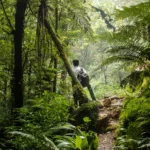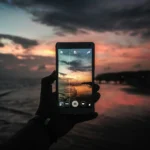Table of Contents
ToggleIntroduction
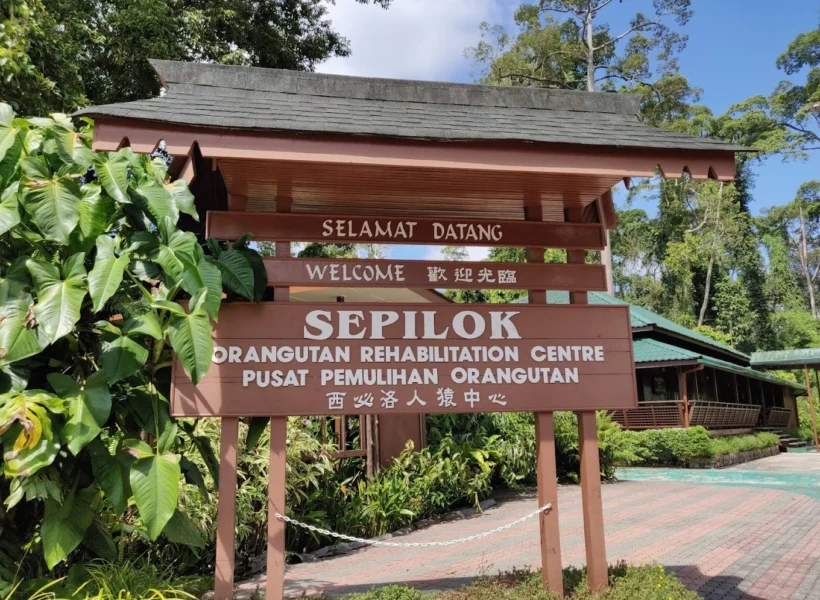
How to Get to Sepilok from Kota Kinabalu
How to Get to Sepilok from Sandakan
Opening Hours, Entrance Fees, and the Best Time to Visit
Quick Summary:
- Opening Hours: Daily, 9:00 AM – 4:00 PM
- Feeding Sessions: 10:00 AM and 3:00 PM
- Ticket Prices: RM 30 (non-MY adults), RM 15 (non-MY kids), RM 5 (MY adults), RM 2 (MY kids)
- Best Time to Visit: March–October (dry season)
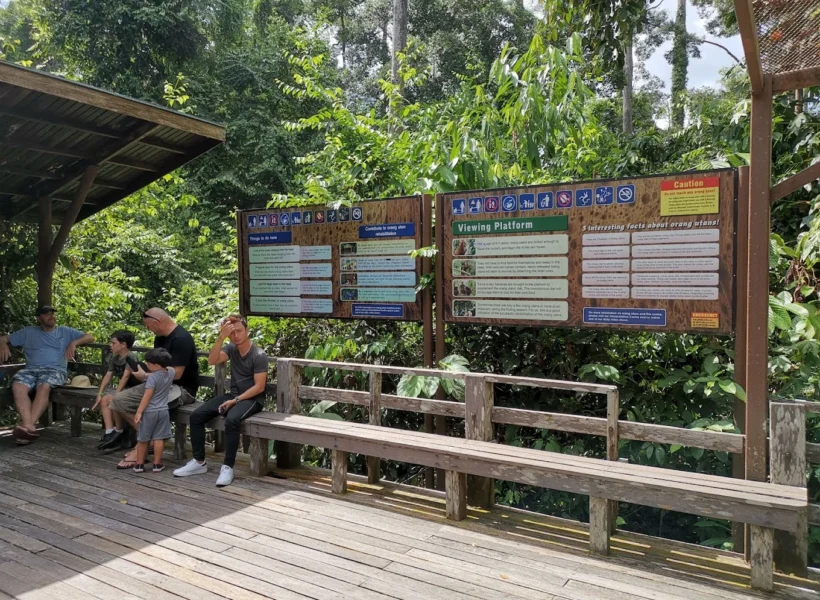
What to Expect During Your Visit
What You’ll Experience:
- A peaceful boardwalk through protected rainforest
- Orangutan sightings during feeding times
- An educational visitor centre with conservation exhibits
- Quiet, respectful observation (no direct interaction)
- Visit duration: 1.5–2 hours
Orangutan Feeding Tips and What to Wear
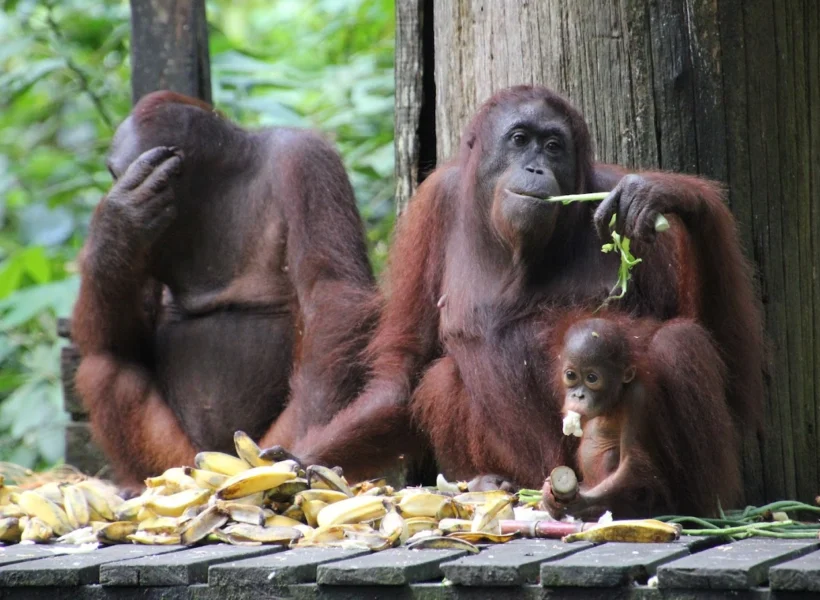
What Else Is Nearby? Two Must-Visit Attractions
Right next to the Orangutan centre is the Bornean Sun Bear Conservation Centre, home to the smallest bear species in the world.
These bears are often kept illegally as pets or poached for body parts. The centre provides a safe space for rescued bears and raises awareness about their plight. Visitors can observe the Sun Bears from elevated walkways and learn about their behaviors, habitats, and the threats they face.
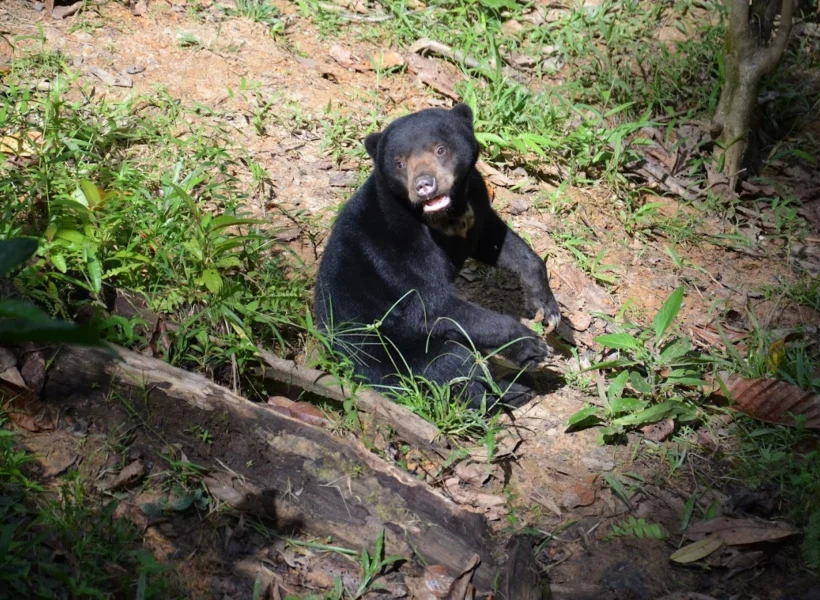
Just a few minutes’ drive away is the Rainforest Discovery Centre (RDC). This attraction is perfect for those who want to deepen their understanding of Borneo’s rainforest ecosystem.
Highlights include the canopy walkway, birdwatching towers, and educational gardens. Guided night walks are also available and offer a chance to spot flying squirrels, Slow Lorises, and other nocturnal wildlife.
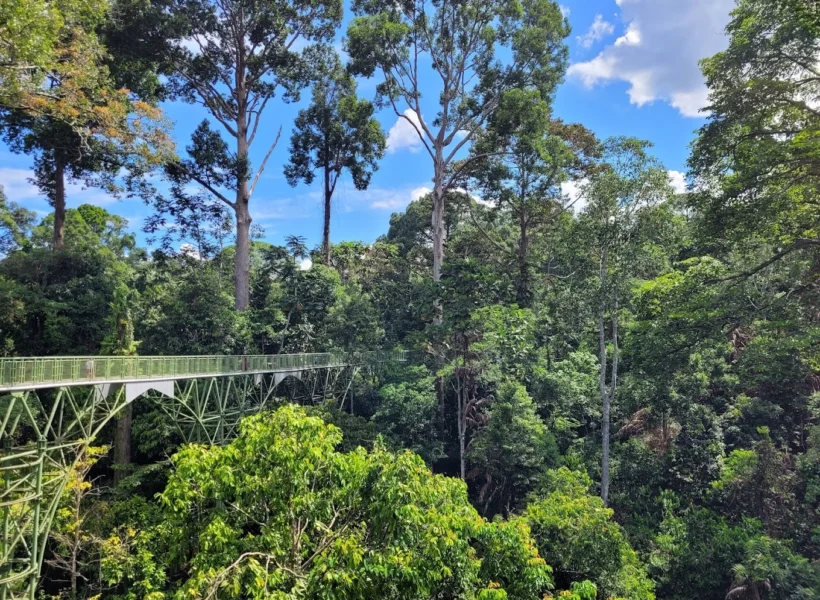
If you’re planning a full day in Sepilok, it’s absolutely worth combining all three experiences— Orangutans, Sun Bears, and rainforest education for a comprehensive and unforgettable eco-tourism day.
Where to Stay Near Sepilok

On the other hand, budget-conscious visitors love Paganakan Dii, which features stylish yet affordable bamboo lodges with open-air lounges.
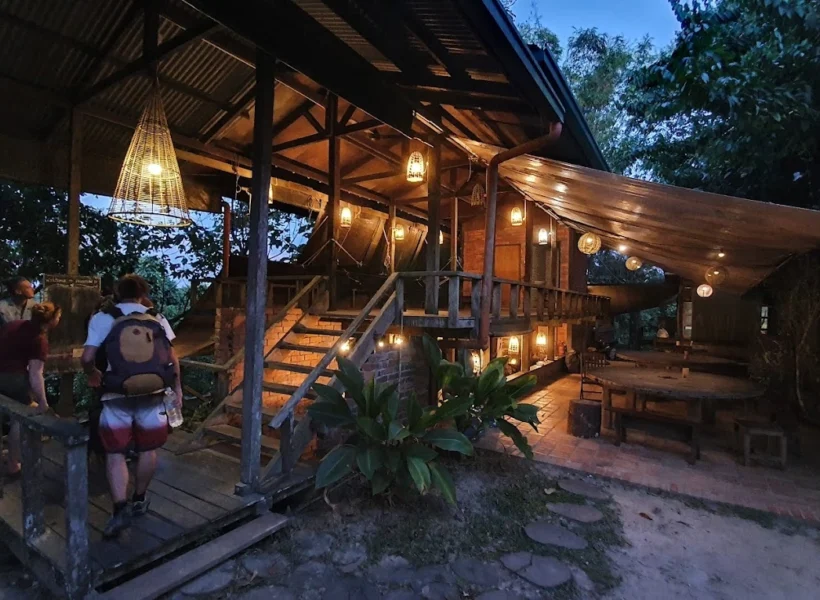
For families and mid-range travelers, they usually stay at Forest Edge Resort, a place offering modern amenities while maintaining a natural jungle vibe.
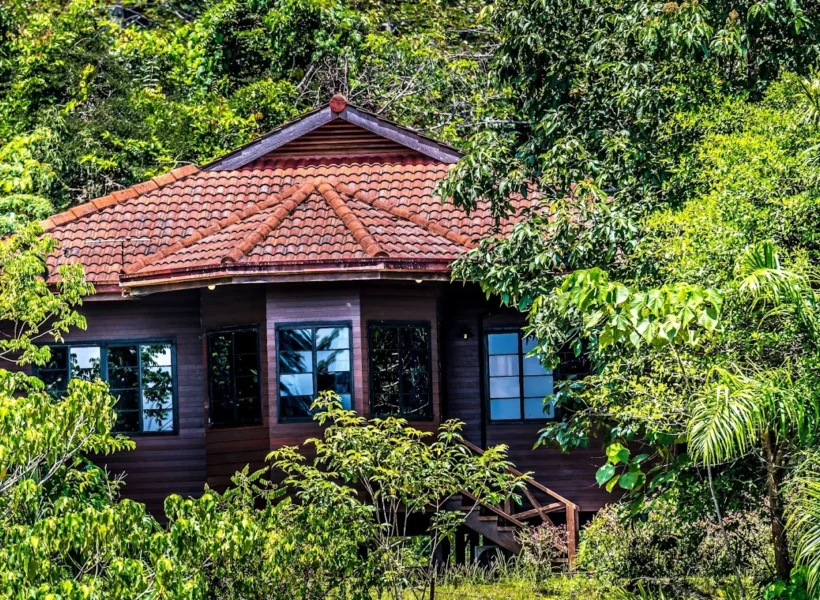
Family Friendliness and Accessibility
Leading by Example: Sepilok Orangutan Rehabilitation Centre and Ethical Wildlife Tourism
In an age where wildlife exploitation is rampant in tourism, the Sepilok Orangutan Rehabilitation Centre sets a gold standard.
Visitors are kept at a respectful distance from the animals. There are no photo ops, no touching, and no feeding by tourists. All practices are designed with the animals’ best interests in mind.
Proceeds from ticket sales go directly into rehabilitation programs, forest protection, and staff training.
The experience may not be flashy, but it is deeply meaningful. You leave knowing you’ve supported something genuine.
How You Can Help
Final Thoughts
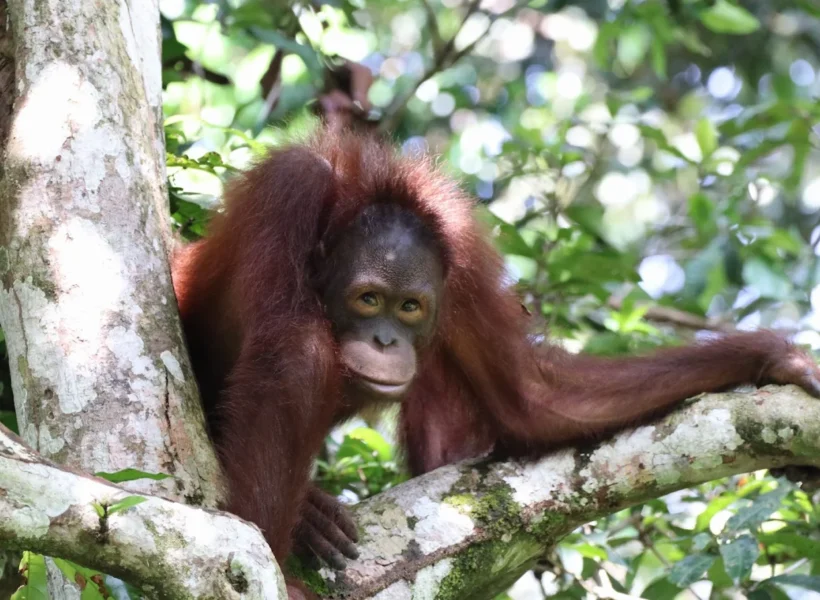
FAQs: Sepilok Orangutan Rehabilitation Centre
Is Sepilok Orangutan Rehabilitation Centre suitable for kids and the elderly?
Yes, the centre is great for families with children and senior travelers. The center features shaded boardwalks, gentle slopes, and resting benches along the way. Feeding platforms are accessible, allowing everyone to comfortably enjoy watching the orangutans up close while learning about their conservation journey.
What other attractions are close to the Sepilok Orangutan Rehabilitation Centre?
You can easily combine your visit with nearby attractions such as the Bornean Sun Bear Conservation Centre, which is located right next door, and the Rainforest Discovery Centre (RDC) — famous for its canopy walk and interactive nature exhibits.
What’s the best time to visit Sepilok Orangutan Rehabilitation Centre?
The best time to visit is during the morning feeding session at 10:00 AM or the afternoon session at 3:00 PM, when orangutans are most active and visible. In terms of season, March to October (dry season) offers more comfortable weather, but even during light rain, the lush rainforest ambiance adds to the charm.
How do I get to Sepilok from Kota Kinabalu?
The most convenient way is to fly from Kota Kinabalu to Sandakan Airport, which takes about 50 minutes. From there, it’s roughly a 30-minute drive (around 25 km) to Sepilok. You can hire a taxi, book a private transfer, or join a guided tour for a seamless journey.
What should I wear when visiting Sepilok Orangutan Rehabilitation Centre?
Opt for light, breathable clothing such as quick-dry shirts and long pants to protect against insects. Comfortable walking shoes or sandals with good grip are recommended for the wooden walkways. Don’t forget insect repellent, sunscreen, and a light rain jacket — as tropical showers can happen anytime.
Discover the Wonders of Sepilok with Milas Travel & Tour
At Milas Travel & Tour, we believe that every journey through Sandakan’s wild side should be as effortless as it is unforgettable. From the Sepilok Orangutan Rehabilitation Centre to the Bornean Sun Bear Conservation Centre and beyond, our team curates meaningful travel experiences that connect you to nature, culture, and conservation.
Regardless of your travel style, be it as a family, couple, or solo adventurer, our guided tours ensure you see the best of Sepilok without the stress of planning.
We handle all the details — from transport to itinerary — so you can focus on the moments that truly matter: watching orangutans swing through the canopy or hearing the forest come alive at dusk.
➜Contact us to learn more or explore other customizable tour options that fit your travel style. Let’s make your Sandakan trip one to remember!
